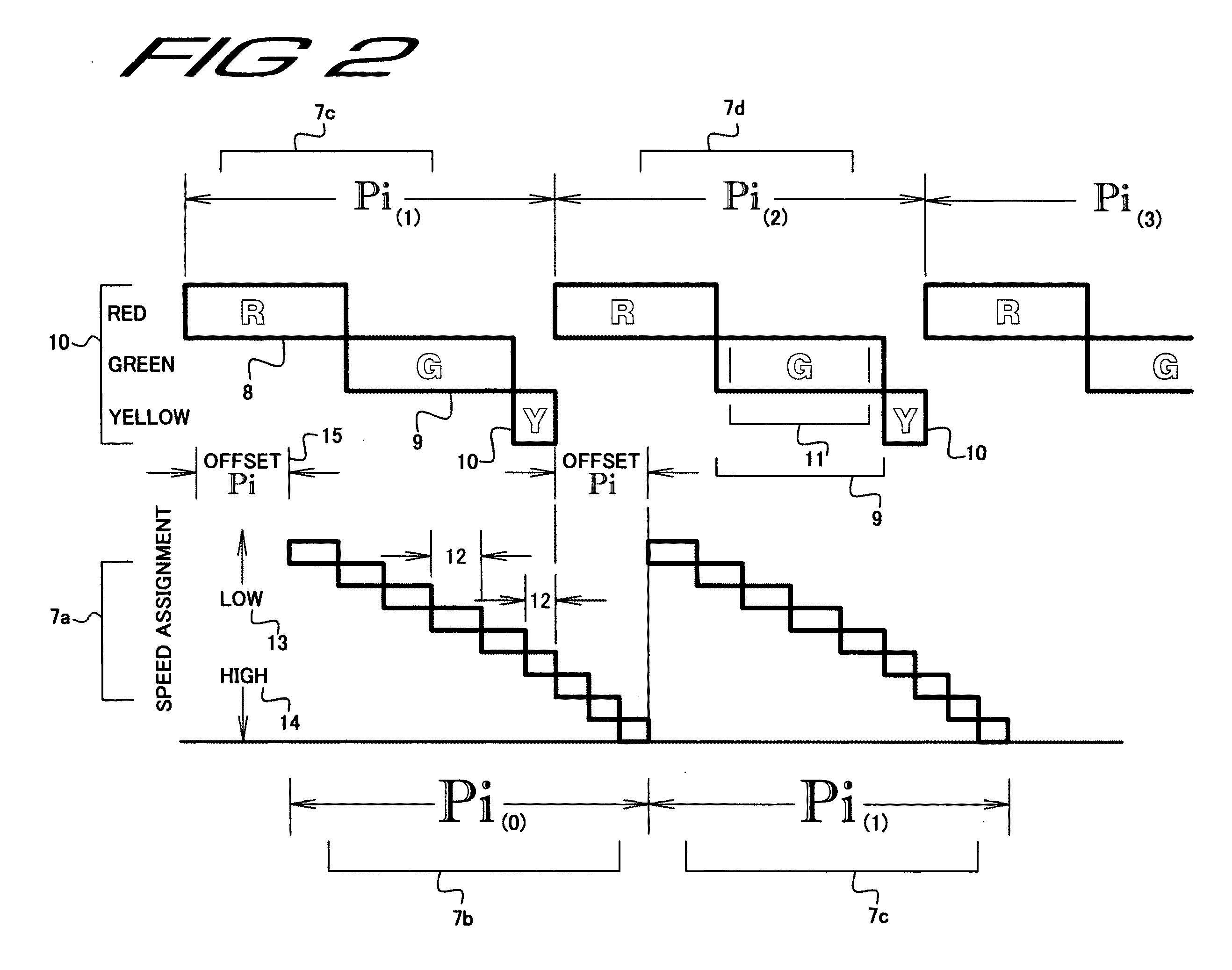Self scheduling flow system with readout as infrastructure
a flow system and readout technology, applied in road vehicle traffic control, traffic signals, instruments, etc., can solve problems such as excessive traffic, danger, and crowding, and achieve the effect of increasing the mobility of traffi
- Summary
- Abstract
- Description
- Claims
- Application Information
AI Technical Summary
Benefits of technology
Problems solved by technology
Method used
Image
Examples
Embodiment Construction
[0058]The following preferred embodiment is proposed for the purposes of disclosure and clarification. By no means and under no circumstances does it represent the only form the invention could take.
[0059]In FIG. [1] a traffic signal (1) controls intersection (2) being governed by traffic sequencer (3) which times itself with Fast Lane On Warning; FLOW sequencer (4) which sends sequences out to changing digits emplaced readout (5) a far distance away on roadway (6) while traffic “RGY” service cycle (7) has service cycle period Pi, that includes red cycle or phase (8), green cycle or phase (9) yellow cycle or phase (10), with a “net” green (11) being part of the green phase (9) in FIG. [2]. The same period Pi is the sum of the FLOW sequences coming out as speed assignments (12) including linear range. Low speed assignments (13) range to high speed assignments (14). After considering cycle start offset (15), speed assignments of Pi-0 (7b) will correspond to net green phase Pi-1 (7c), ...
PUM
 Login to View More
Login to View More Abstract
Description
Claims
Application Information
 Login to View More
Login to View More - R&D
- Intellectual Property
- Life Sciences
- Materials
- Tech Scout
- Unparalleled Data Quality
- Higher Quality Content
- 60% Fewer Hallucinations
Browse by: Latest US Patents, China's latest patents, Technical Efficacy Thesaurus, Application Domain, Technology Topic, Popular Technical Reports.
© 2025 PatSnap. All rights reserved.Legal|Privacy policy|Modern Slavery Act Transparency Statement|Sitemap|About US| Contact US: help@patsnap.com



